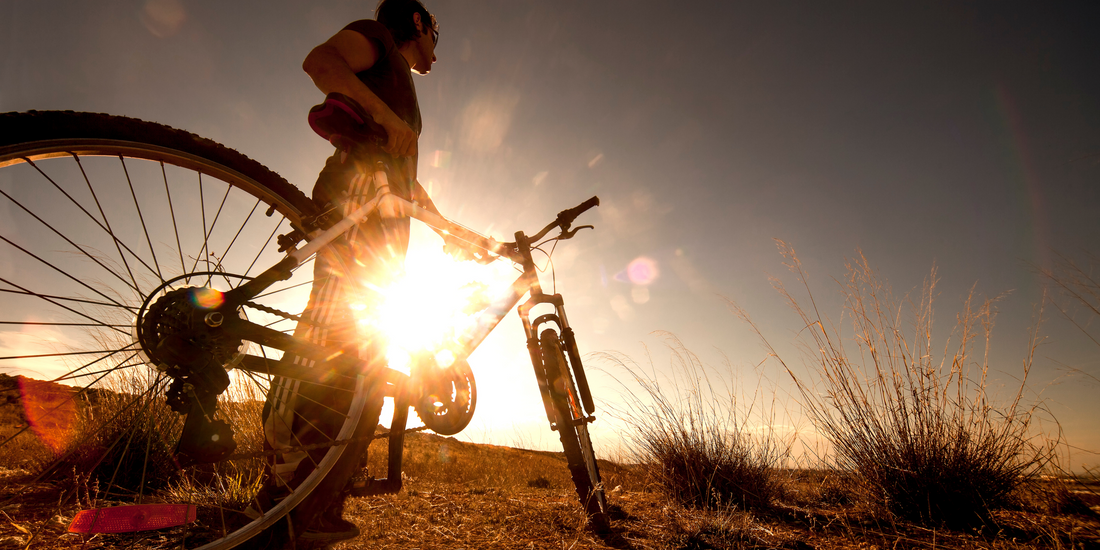
As temperatures continue to rise due to the effects of climate change, our summers are getting hotter than ever before. In fact, NASA released data that the summer of 2024 was the hottest on record. As cyclists, this means we’ll need to make sure we hydrate enough, especially on longer rides, ensuring we get the electrolytes we need. It also means we need to take the risk of heat exhaustion or heat stroke seriously. Both can have serious health consequences if ignored. In the case of heat stroke, it’s actually a medical emergency.
Here, experts share their best heat stroke prevention tips so you can protect yourself from overheating and ride happy and healthy all summer long.
Heat Exhaustion vs. Heat Stroke
Before we break down how to monitor and limit the negative effects of heat, let’s dissect the difference between heat exhaustion and heat stroke. The distinction isn’t always clear cut, but symptoms of either should be addressed immediately.
“Heat exhaustion symptoms include heavy sweating, cool clammy skin, fast weak pulse, nausea or vomiting, feeling dizzy with headache and maybe fainting,” says Andy Pruitt, founder of Boulder Center for Sports and a medical consultant for Specialized Bicycle Components.
To treat heat exhaustion, Pruitt recommends moving into the shade as soon as possible, loosening clothing, wetting the body for evaporation, and sipping on water or eating ice chips. “Get medical help if your symptoms begin to change toward heat stroke,” he says.
On the other hand, “heat stroke symptoms include fever, hot red skin, fast pounding pulse, severe headache, nausea or vomiting, mental disorientation, or loss of consciousness,” says Pruitt.
What to Do if Someone Gets Heat Stroke on a Ride
If you or a fellow rider are experiencing any of the symptoms described above, Pruitt says the treatment is simple: Call 911. “Move the person to the shade, douse the body with water or an ice bath, do not give food or water, this is a medical emergency.”
As mentioned, the lines are slightly blurred between heat exhaustion and heat stroke, so if you’re uncertain which one you’re experiencing, it’s always safer to err on the side of caution and contact a medical professional immediately.
Preventing Heat Exhaustion or Heat Stroke While Cycling
Diagnosing your heat-related condition can prove to be difficult, but there are some surefire ways you can prevent an issue from happening.
1. Use Your Data
Utilizing your heart rate monitor and power meter can help quantify some of the effects of riding in the heat. Generally, riders with these two devices know what metrics to expect on an average ride, so if something looks off, it probably is.
“On hot and humid days when heart rate values are high relative to power output, it can be a sign the body is heating up and mechanical efficiency is declining,” explains Todd Carver, Head of Human Performance at Specialized Bicycle Components. “Part of this heart rate increase is an autonomic cardiovascular strategy to send more blood to the skin for cooling, and part of it is an increase in HR to maintain cardiac output while the heart’s stroke volume is declining due to dehydration.”
Make sure to stay on top of your hydration plan. Pruitt says you can consume twice as much of a cool, diluted sports drink as you normally would. Replacing the electrolytes you lose through sweat is extra important when riding in the heat.
2. Keep Your Cool
To mitigate the effects of heat on the body, Carver recommends stopping to frequently fill your bottles with ice cold water, and squirt some water over your head and down your back throughout the ride.
Some pros have even been known to stuff pantyhose with ice and stick them in their jerseys to keep their core temperatures down.
3. Avoid High Heat
When possible, try to exercise outdoors when it’s not extremely warm, suggests Pruitt. Schedule your rides during the early morning hours for a #dawnpatrol spin or late afternoon before the sun sets.
This allows you take advantage of the cooler temps throughout the day without being stuck on an indoor trainer to get the miles in.
4. Adjust Your Kit
Hot days are not the days to reach for that all black kit, no matter how light or breathable the fabric. Instead, Pruitt says to opt for a light-colored, loose-fitting kit—bonus points for mesh vents in high heat areas such as the underarms or back.
Choose a well-ventilated helmet and wear a wet cloth or sun cap to keep your head cool. And always, always wear sunscreen of at least 30 to 50 SPF on exposed skin.
Source: Nystrom, M. (2025, May 29). Want to ride happy all summer? These 4 heat stroke prevention tips are key. Bicycling. https://www.bicycling.com/health-nutrition/a64894816/heat-stroke-tips-cycling/

